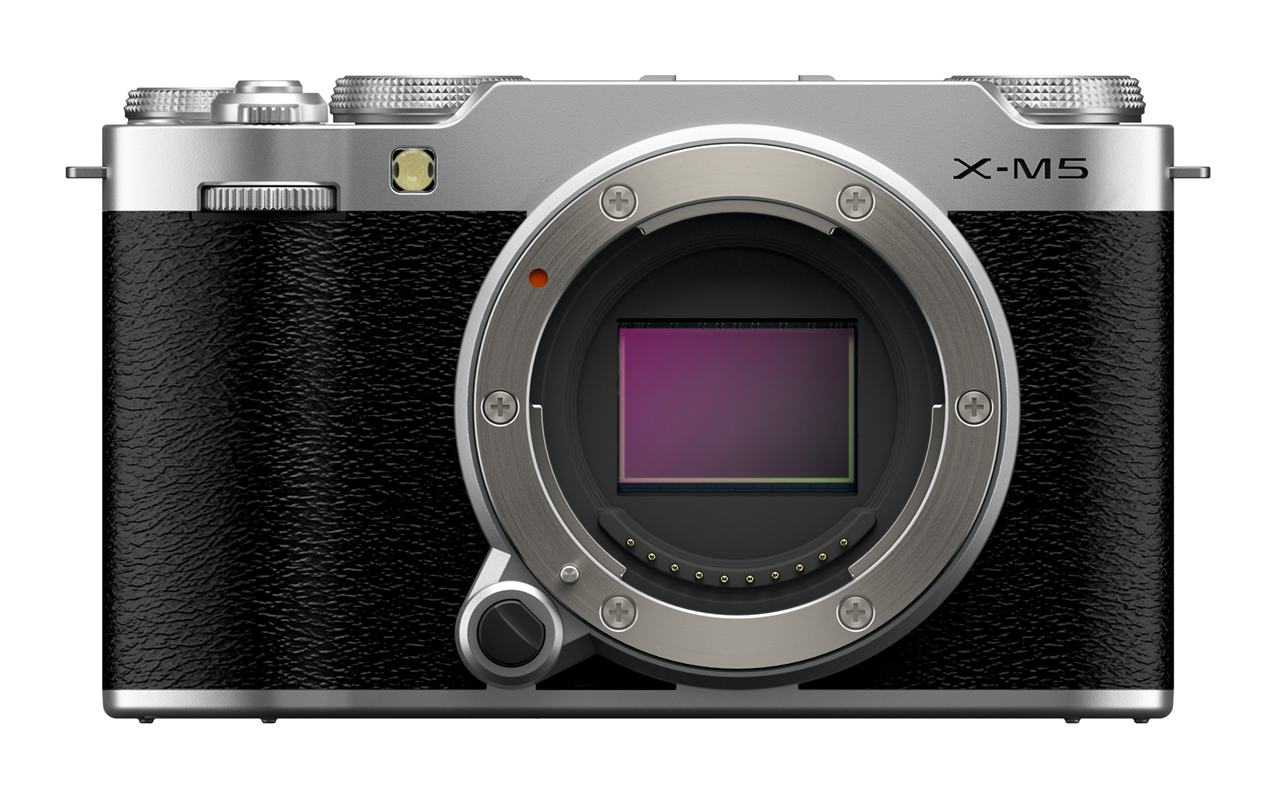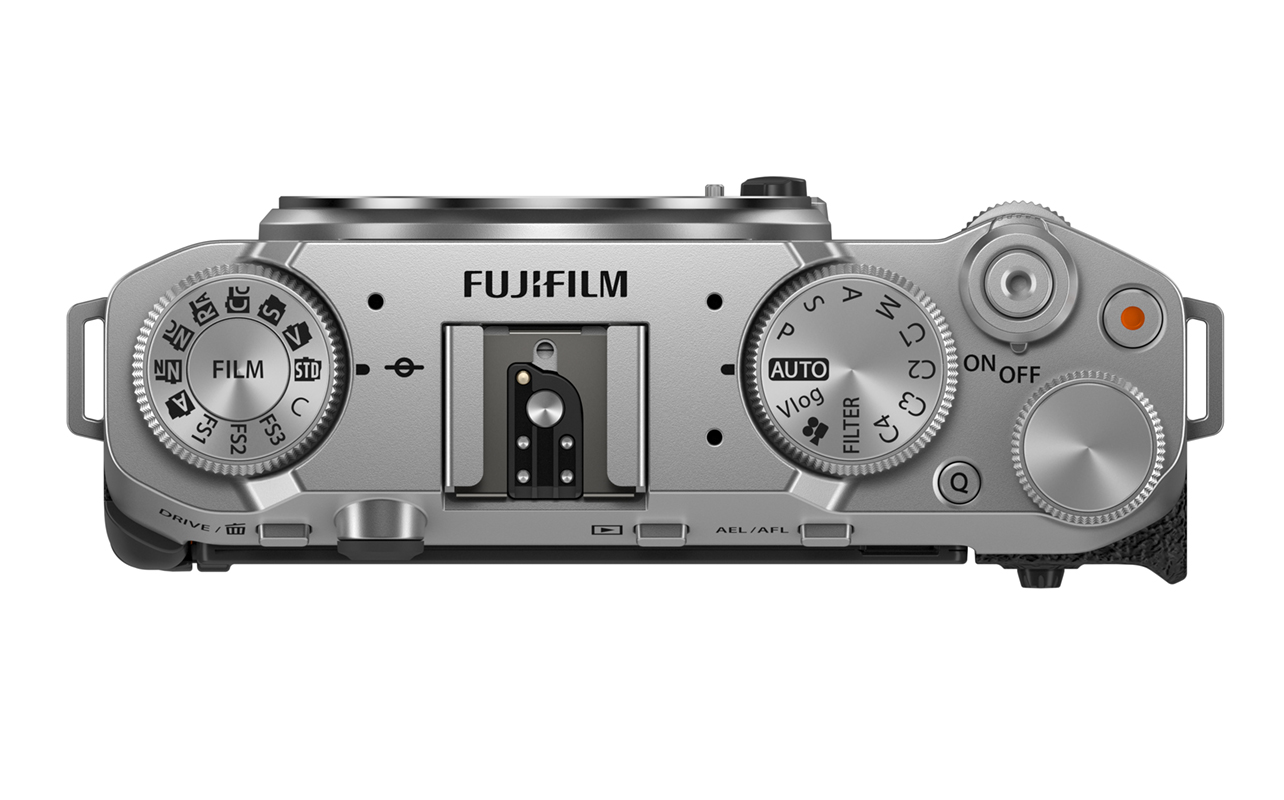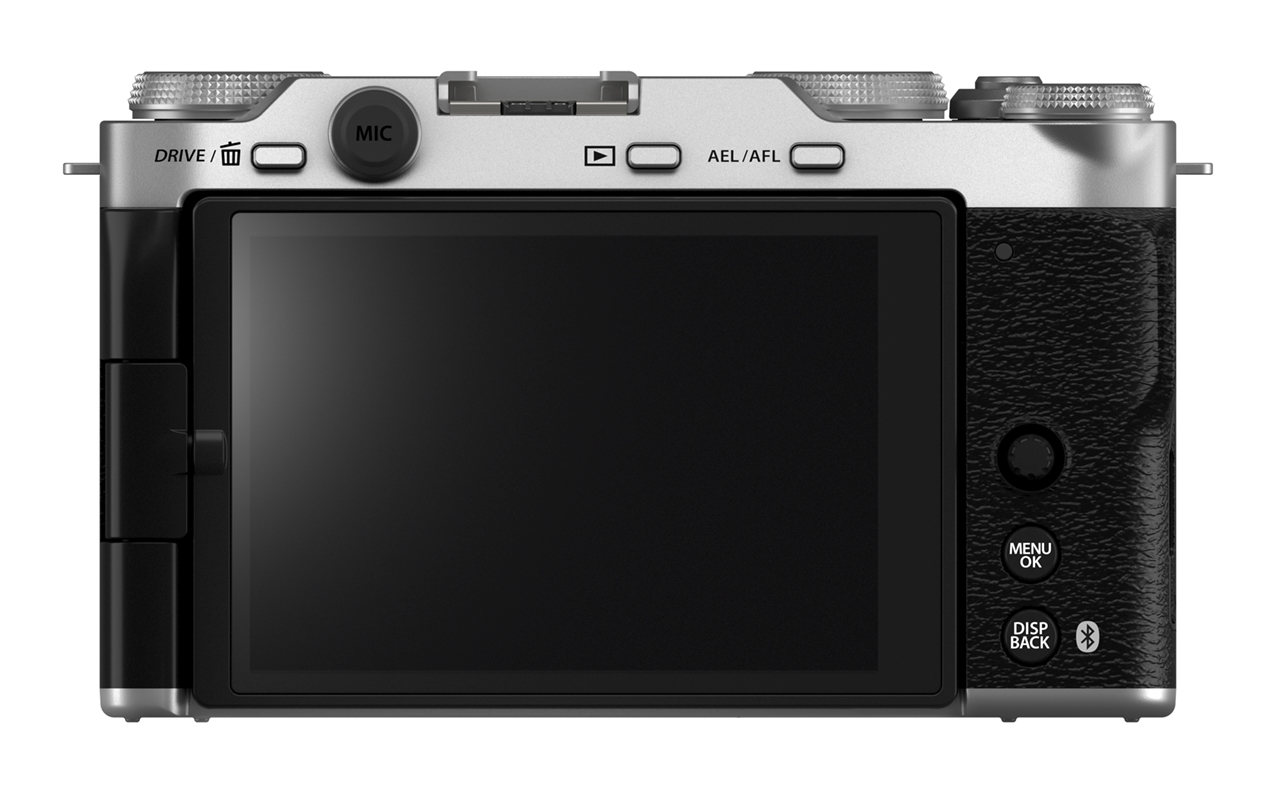
Fujifilm is launching a new mirrorless camera with the X-M5 that is the lightest in the company’s X Series lineup. It only weighs 355 grams (body only) and sticks with the same retro styling that has long been a staple of the series.
The X-M5 is a compact model that could be ideal for travel or street photography, as well as vlogging and content creation. That’s especially true since it’s also compatible with Fuji’s XF lenses. The company also says its smaller size won’t compromise quality given the image sensor, autofocus and video recording options.
Fujifilm X-M5 details

The X-M5 doesn’t have a direct “successor” since Fuji hasn’t released an X-M camera in over a decade. This camera is more a combination of other designs. For example, the X-M5 has the same 26-megapixel X-Trans CMOS 4 image sensor and X-Processor 5 image processing engine as the Fujifilm X-S20, though shares nothing else in common with that higher-end camera from a design standpoint.
There is no electronic viewfinder here, so you’ll be using the 3-inch screen to frame every shot. You also don’t get in-body image stabilization, meaning you will need to rely on stabilization coming from the lens you attach to it.

Control dials and interface
The company’s own Film Simulation Mode Dial is on the top of the camera itself. The eight most popular ones (of the total of 20) are on the dial, along with your ability to program an additional three yourself. The other dials are your standard modes and two others to control shutter speed, ISO, or aperture. Dedicated shutter and video recording buttons also return as Fujifilm staples.
The back has limited buttons but the key one is the joystick because you can use it to either adjust the focal point or navigate the interface and menus. It is a touchscreen, too, so you also have the option to tap to focus as well.
Video recording features
It’s interesting that Fuji moves the 3.5mm jack to the back of the camera, making it possible to plug in a microphone and still articulate the screen. Though there is an extra built-in microphone in the body to help distinguish between your subject’s audio and ambient noise, you can always plug in an external mic to offset that instead.
Fuji clearly has vlogging in mind here since there are modes to capture video in both 16:9 and 9:16 aspect ratios. So, if you want to increase the quality of vertical social media videos, this might be a way to do it. A dedicated Vlog mode offers onscreen options, like a Portrait Enhancer, Background Defocus and Product Priority, all of which can help if you’re presenting something to an audience.

One thing that’s neat is short video mode in 9:16, which lets you shoot a vertical video without physically turning the camera sideways. In this mode, it isolates the centre of the frame and captures a 1080 x 1920 crop from it. The X-M5 also offers 15, 30, and 60-second limits to stop recording for you at those times, though you can also stop whenever you like.
You can record footage at up to 6.2K in 3:2 capture, though you’re more likely to use 4K at 24fps, 25fps, 30fps, or 60fps. Slow-motion clips at 1080p HD can go up to 240 fps. Just bear in mind there’s a crop factor that comes into play, like a 1.18x in 4K/60fps 1.29x for 240fps clips in 1080p. Apart from those limits, there are no crops in other settings. Since there is no in-body stabilization, you can use electronic stabilization, though the crop factors increase to help stabilize footage in those cases.
Transfer and storage
In a useful move, the X-M5 also allows for USB-C file transfers to smartphones. This way, you can take photos or video and move it to a phone faster using a cable. This makes it significantly faster to then edit on a phone or post on social media. It’s just that file sizes may be large so your phone needs to have available storage.
There is only one UHS-I SD card slot at the bottom where the battery goes. When you transfer files to a phone, they also still stay on the memory card.
Fuji rates the X-M5 at up to 440 frames per charge for the battery. It’s not entirely clear how much recorded footage you can get before you need to recharge.
Pre-order the Fujifilm X-M5 today at Best Buy
The Fujifilm X-M5 is the company’s most compact camera to date in the X Series. The camera will come in silver in body-only or with the 15-45mm kit lens. Check out all the latest Fujifilm cameras and gear available now.





